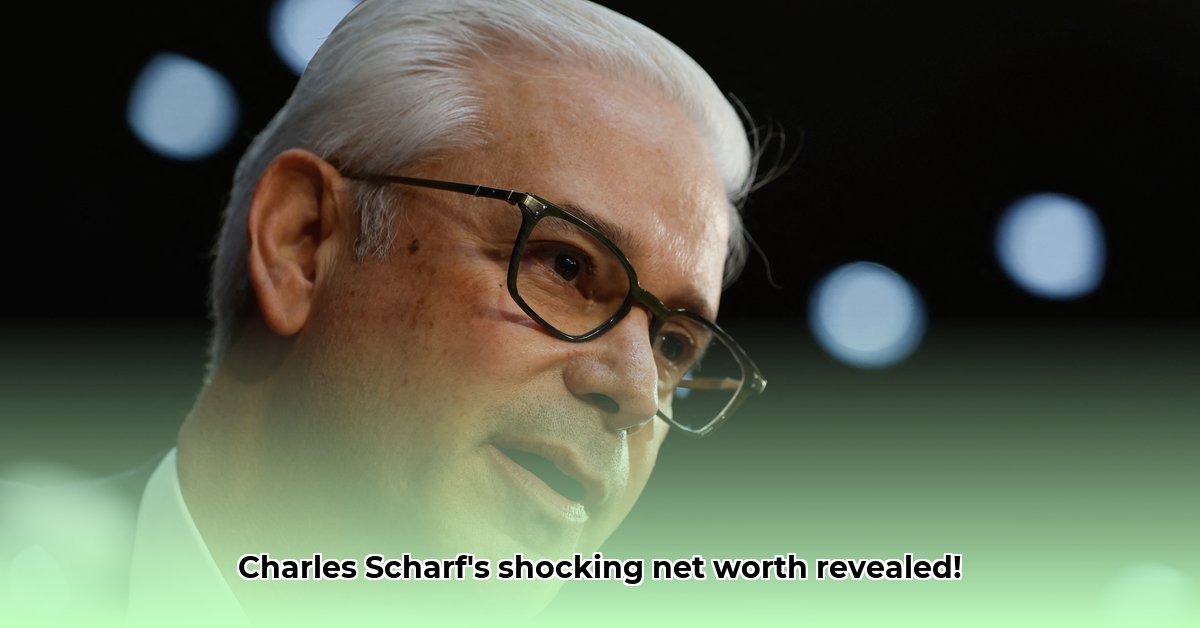
Charles Scharf Net Worth: A Complex Calculation
Determining the precise net worth of Charles Scharf, CEO of Wells Fargo, proves challenging due to the limited public availability of comprehensive financial data. While his compensation packages are a matter of public record, a precise figure encompassing all assets remains elusive. This analysis, therefore, focuses on understanding his financial picture through the lens of his career trajectory and reported compensation, offering valuable insights into the broader discussion surrounding executive compensation.
A Stellar Career in Finance: A Trajectory of Success
Charles Scharf’s career reflects a remarkable ascent in the financial industry. His leadership roles at prominent institutions, including Visa and JPMorgan Chase, preceding his current position at Wells Fargo, undeniably contributed significantly to his wealth accumulation. However, quantifying this contribution requires a deeper dive into the specifics of his compensation at each stage of his career. How much did his considerable earnings at these previous positions contribute to his current net worth? This remains an important area of speculation in absence of definitive figures.
Deconstructing Multi-Million Dollar Compensation Packages
Public reports consistently highlight Charles Scharf’s receipt of multi-million-dollar compensation packages throughout his career. These packages typically include a base salary, performance-based bonuses, and stock options. While the sheer magnitude of these figures is undeniable, their significance requires contextualization. Did these compensation packages accurately reflect his contributions and the performance of the respective organizations? This question is central to the ongoing debate surrounding executive compensation practices and their impact on various stakeholders. Were these payouts commensurate with the risks involved and the overall value generated for the shareholders?
The Limitations of Public Information: Unveiling the Unknown
While public records provide insights into Mr. Scharf's compensation, accessing a complete picture of his net worth is hampered by the inherent privacy surrounding personal investments, assets outside his employment, and charitable donations. Therefore, any estimates or figures circulating in the public domain, like a previous figure suggesting around $41.1 million, must be approached with caution, considering their potential for inaccuracy and outdated information. The lack of comprehensive data necessitates a focus on analyzing the available information rather than attempting to pinpoint an exact net worth.
Stakeholder Perspectives: A Multifaceted View
Charles Scharf’s compensation significantly impacts multiple stakeholders, each with distinct perspectives:
- Wells Fargo Shareholders: Shareholders are primarily concerned with return on investment (ROI). Does Mr. Scharf's compensation align with the company's overall financial performance and long-term growth prospects? Is the investment in his compensation justified by the value he brings to the bank?
- Investors: Investors evaluate the alignment between executive compensation and company performance. Does Mr. Scharf's compensation demonstrate responsible use of company funds? Does his compensation structure incentivize decisions that serve shareholders’ interests?
- Financial Regulators: Regulators focus on transparency and compliance. Is Mr. Scharf's compensation compliant with all applicable regulations and ethical standards? Does it show the potential for conflicts of interest or improper practices?
- Wells Fargo Employees: Employees are naturally interested in pay equity. Does Mr. Scharf's compensation reflect a fair and equitable approach to the compensation of all employees within Wells Fargo? Does it inspire morale and engagement?
The Complexities of Executive Compensation: Balancing Act
The debate around executive compensation reveals a complex balancing act. Attracting and retaining top talent requires offering substantial salaries and incentives. The potential for increased risk-taking, which potentially leads to significant company growth, also warrants consideration. However, excessive compensation may raise concerns about accountability and potential conflicts of interest, impacting transparency and the bank's reputation.
The Future of Financial Transparency: A Necessary Evolution
The quest to precisely calculate Charles Scharf's net worth underscores the need for greater transparency in executive compensation. By critically analyzing public compensation data alongside company performance and various stakeholder perspectives, we gain a more robust understanding of this intricate landscape. The future of financial stability and trust requires open discussions and improved practices to ensure equitable and responsible decision-making in the area of executive compensation. Greater transparency will benefit not only investors, but also the overall societal perception of financial transparency.
Charles Scharf’s Compensation at Wells Fargo: Performance and Context
Analyzing Charles Scharf’s compensation at Wells Fargo within the context of the bank's performance is crucial. His 2023 compensation of $29 million, representing an 18.4% increase, requires careful scrutiny. The fact that he requested “negative discretion” presents a nuanced picture, suggesting a consideration for public perception and corporate responsibility but also emphasizing that the initial compensation package was substantial nonetheless. How does this balance affect the perception of his leadership decisions?
While Wells Fargo saw improvements in net income and stock price during his tenure, these gains must be viewed against the backdrop of persistent challenges, including lingering repercussions from past scandals and the ongoing Federal Reserve asset cap. This brings up important questions about the correlation between executive compensation and sustained company-wide improvement. Further analysis is required to determine whether this compensation reflects appropriate market value, considering both positive financial achievements and ongoing operational difficulties.
Key Takeaways: Determining Charles Scharf’s net worth requires a nuanced approach, acknowledging the limitations of publicly available financial information. This analysis highlights the importance of contextualizing his compensation within his career trajectory and the performance of the banks he has led, emphasizing the multifaceted perspectives of various stakeholders. The need for greater transparency in executive compensation practices remains a pressing issue.